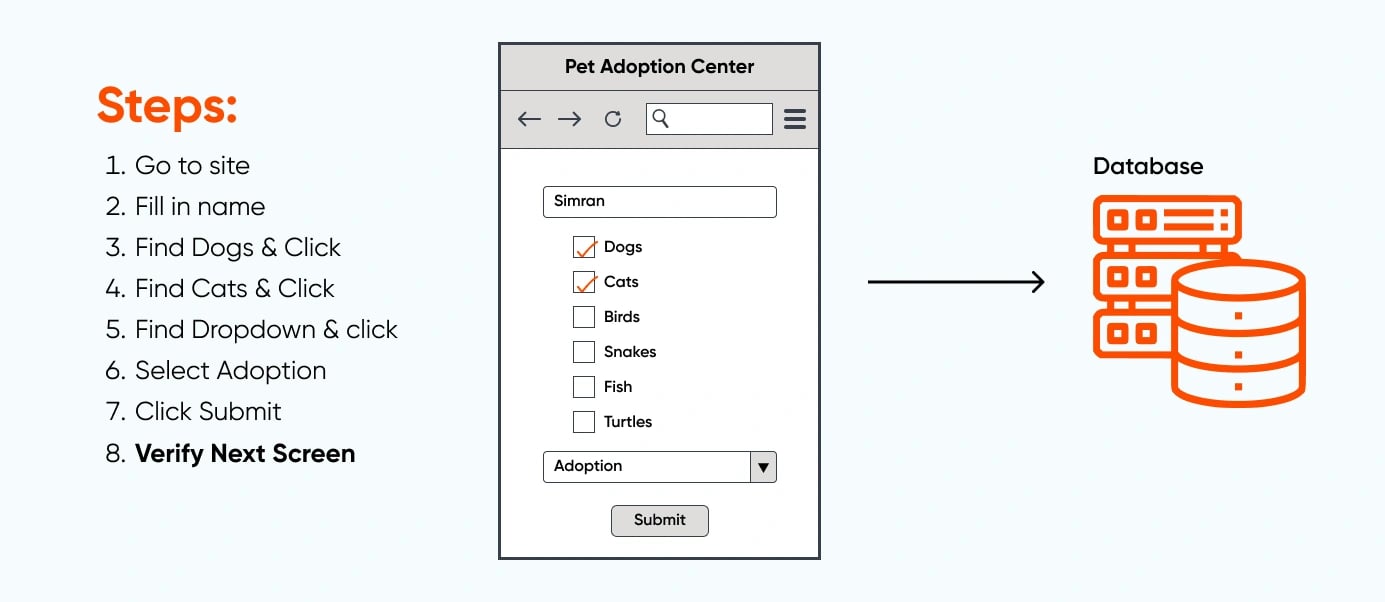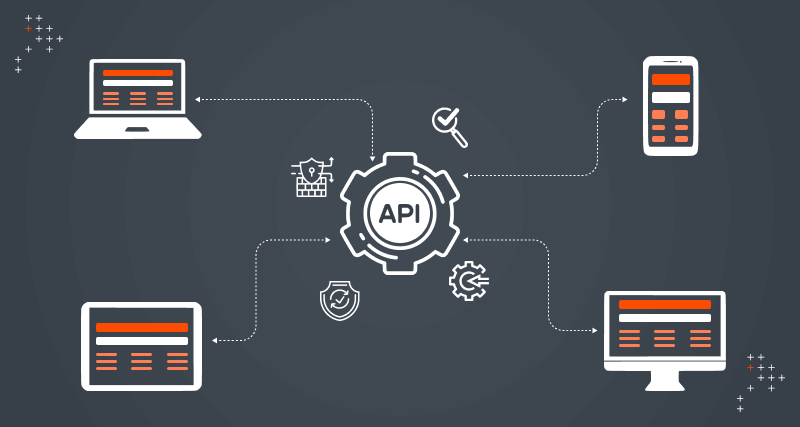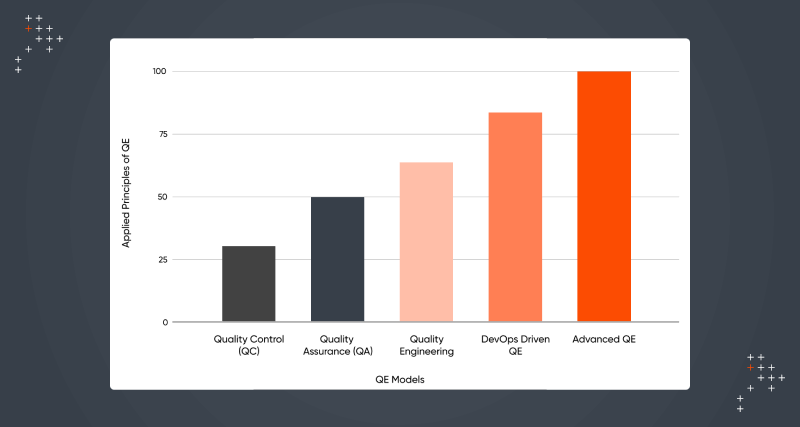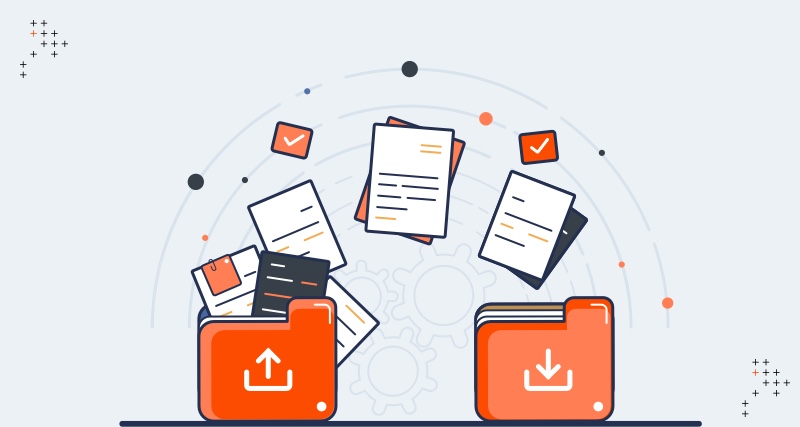3.Introduction
APIs (Application Programming Interfaces) play a pivotal role in connecting and transferring data across systems and applications, making them a central element in software development. The strategic testing of APIs enhances efficiency, facilitating faster software delivery for organizations.
As per a report by Data Bridge Market Research, the global API testing market is anticipated to reach a staggering USD 4,733 million by 2030, up from USD 1,071 million in 2020. This surge aligns with the growing prevalence of cloud applications and interconnected platforms that heavily rely on APIs.
API testing encompasses various dimensions, primarily involving the request and validation of API endpoints. This validation extends to aspects such as communication, security, performance, status, and functional correctness. The emphasis in API testing lies in evaluating business logic, identifying security vulnerabilities, addressing performance bottlenecks, and ensuring accurate data responses.
Dimpy Adhikary, an accomplished Quality Analyst with over a decade of experience, underscored the significance of API testing in a thought-provoking discussion during Axelerant’s QA Q&A show with Shweta Sharma.
Learn more about the intricacies of API testing and how it's executed.
What Is API Testing?
API testing stands as a critical facet of software testing, where APIs undergo rigorous examination to ascertain compliance with expectations regarding reliability, functionality, performance, and security. The primary goal of API testing is to unveil bugs, inconsistencies, or deviations from the anticipated behavior.
Within the realm of applications, there exist three distinct layers:
- Presentation Layer or User Interface
- Business Layer or User Interface for Business Logic Processing
- Database Layer for Modeling and Manipulating Data
API testing is done at the business layer, the most critical software architecture layer.
Why API Testing Is Important
API testing holds paramount importance for various reasons, contributing significantly to the success of software development. Here are key aspects that highlight the significance of API testing:
Prompt Validation
With API testing, the validation of responses and data reliability can commence as soon as the logic is designed. This proactive approach eliminates the need to wait for different teams to complete their work or for the entire application to be fully developed. Test cases are isolated, ready to be built immediately, streamlining the testing process.
Efficient Test Maintenance
The dynamic nature of User Interfaces (UIs) poses a challenge in terms of continuous changes based on access methods. This constant evolution necessitates frequent test rewriting to keep pace with code production. API changes, being more controlled and infrequent, facilitate more efficient refactoring of tests, ensuring optimal maintenance.
Quicker Resolution
When API tests fail, pinpointing the system's breakage and locating defects becomes a more straightforward process. This streamlined approach reduces the time spent assessing bugs between builds, integrations, and across different team members. The small, isolated footprint of API tests is particularly advantageous for quicker Mean Time To Resolution (MTTR) stats, a crucial KPI for DevOps teams.
Optimal Speed And Coverage
In contrast to UI tests that might take hours to run, API tests offer optimal speed and coverage. Running 500 API tests can be accomplished in just 5 minutes, allowing testers to identify more bugs in less time. This swift identification enables immediate error resolution, enhancing the overall efficiency of the testing process.
Consider the example below, illustrating a standard functional test at the UI level. A user navigates to a website, fills out a form, submits it, and verifies the transition to the next screen. While this simple UI test presents challenges related to the physical limitations of browsers and network connections, API testing simplifies complex scenarios.

For instance, if the 'Dogs' entry obscures the 'Cat' entry, users may encounter difficulties in selection. At this UI level, challenges arise with the addition of 10,000 different names and combinations through the form. However, with API testing, this intricate scenario boils down to a single step: conducting a comprehensive API test.
Consequences Of Neglecting API Testing
According to Dimpy Adhikary,
Neglecting API testing poses significant challenges in validating the functionalities of APIs. The absence of API testing increases the risk of severe adverse effects on the overall project's security, elevating the chances of fraudulent activities. It underscores the critical role API testing plays in ensuring the robustness and integrity of software systems.
How API Testing Is Done At Axelerant
At Axelerant, our quality engineering experts adhere to a systematic approach to executing API testing. The following steps outline the process:
Step 1: Specification Review
Initiating the API testing journey begins with a thorough specification review. Testers meticulously document API testing requirements, seeking answers to pivotal questions such as:
- What is the purpose of the API?
- What is the workflow of the application?
- Which integrations are supported by the API?
- What are the features of the API?
Efficient API testing relies on the comprehensive documentation of these requirements.
Step 2: Determine Appropriate Test Strategy
Determining the appropriate test strategy is a critical step, involving an in-depth analysis of API specifications, requirements, and use cases. This phase identifies the testing techniques, tools, and resources required for effective API testing.
Step 3: Set Up The Test Environment
A robust testing environment is essential for accurate API testing. This step involves configuring the necessary parameters around the API, including the setup of databases and servers to align with application requirements.
Step 4: Integrate Application Data
Integration of application data with API tests is paramount to ensure the proper functioning of the API against all possible input configurations. This step enhances the comprehensiveness of the testing process.
Step 5: Analyze The Type Of API Test Required
With clear testing requirements and boundaries in place, the next step is to analyze the specific type of API test required. Different API tests serve various purposes, and a thoughtful analysis helps in making informed decisions.
Step 6: Test Execution, Reporting, And Management
Execution of test cases follows, aligning with the predefined requirements. Common parameters and conditions are identified for developers to use while calling the APIs and testing various scenarios. Test results are meticulously documented in a test management tool, ensuring accessibility, and facilitating efficient defect management.
Best Practices For API Testing
In addition to the aforementioned steps, here are some best practices that our testers follow for effective API testing:
- Start testing first for the typical or expected results.
- Add stress to the system through a series of API load tests.
- Try to test for failure.
- Group test cases by test categories.
- Automate testing wherever possible.
- Perform well-planned call sequencing.
- Prioritize API function calls.
- Limit the test variables to keep them isolated.
- Create test cases for all possible API input combinations.
- Incorporate mocking, stubbing, and driver components into API testing. This helps create controlled testing environments, isolating dependencies and stimulating specific behaviors for external dependencies.
Dimpy Adhikary further elaborates on these best practices in a discussion during Axelerant’s QA Q&A show with Shweta Sharma.
Types Of API Testing
API testing encompasses various types, each serving a specific purpose in ensuring the robustness and functionality of an API. Here is an overview of different API testing types:
- Functionality Testing
This type of testing validates whether the API functions as intended. It focuses on ensuring that the API performs the tasks it was designed for without any deviations.
- Reliability Testing
Reliability testing checks if the API can be consistently connected to and consistently delivers reliable results. It assesses the API's stability and its ability to provide consistent performance over time.
- Load Testing:
Load testing is crucial to ensure the performance of the API under both normal and peak conditions. This type of testing helps identify how well the API handles various levels of load and traffic.
- UI Testing:
Involving the testing ensures that the user interaction with the API is seamless and intuitive. This type of testing is essential for evaluating the overall user experience and interface responsiveness.
- Validation Testing:
Validation testing verifies different aspects of the product, its behavior, and the overall efficiency of the API. It ensures that the API adheres to the specified requirements and meets the expected standards.
- Security Testing:
Security testing is crucial to verify that the API is secure against all possible external threats. This includes assessing the API's vulnerability to potential security breaches and implementing measures to mitigate such risks.
- Fuzz Testing:
Fuzz testing involves testing the API in terms of its limits to prepare for worst-case scenarios. It systematically introduces invalid or unexpected inputs to assess how well the API can handle such variations and whether it behaves as expected.
- Penetration Testing:
Penetration testing is a comprehensive approach to ensure that all vulnerabilities of an application, including the API, are detected. It involves simulating real-world attacks to identify potential weaknesses in the system's security. - Contract Testing:
Contract testing is a lightweight form of API testing that focuses on verifying the content and format of API requests and responses. It ensures that the API contracts, defining communication between different software components, are honored.
Beyond these specific API testing types, API tests play a crucial role in helping testers identify various issues, including:
- Missing or duplicate functionality within the API.
- Improper messaging might affect communication protocols.
- Reliability issues that could impact the consistent performance of the API.
- Incompatibility of error handling mechanisms that may lead to unexpected failures.
- Multi-threaded issues, addressing challenges related to parallel processing.
- Security, performance, and scalability issues that could compromise the overall effectiveness of the API.
By conducting a comprehensive set of API tests, testers can ensure the reliability, security, and optimal performance of APIs, contributing to the overall success of software systems.
Benefits of API Testing: Ensuring Reliability, Security, and Scalability
API testing is a crucial aspect of modern software development workflows, offering a multitude of benefits that contribute to the overall success and efficiency of the development process. Here are some key advantages of incorporating API testing into your testing strategy:
- Cost-Effective Test Automation
Less Code, Faster Testing: API test automation requires less code compared to automated GUI tests, resulting in faster testing cycles. This efficiency translates to lower overall testing costs, making API testing a cost-effective solution. - Early Issue Identification and Resolution
Access Without UI: API testing allows developers to access applications without relying on a UI. This facilitates the early identification of errors in the development lifecycle, preventing issues from escalating and becoming more challenging and costly to resolve. - Technology and Language Independence
Versatility with JSON and XML: API tests are technology and language-independent, utilizing data exchange formats like JavaScript Object Notation (JSON) or Extensible Markup Language (XML). This ensures compatibility and ease of integration across diverse technological stacks. - Enhanced Security Measures
Extreme Condition Testing: API tests involve analyzing applications under extreme conditions and inputs. This rigorous testing helps identify vulnerabilities, safeguarding applications against potential security threats and malicious code. - Integration with GUI Tests
Collaborative Testing Approach: API tests can seamlessly integrate with GUI tests. For instance, creating new users within an application using API tests before executing GUI tests ensures a comprehensive testing approach, promoting collaborative testing efforts. - Quality Assurance and Reputation Management
Preserving Consumer Trust: API testing plays a crucial role in quality assurance, preserving consumer trust, and protecting the reputation of businesses. Continuous testing ensures that APIs perform as expected, avoiding disruptions and maintaining a positive user experience. - Shift-Left Approach for Early Issue Detection
Predictable Development Process: A shift-left approach to API testing allows teams to detect defects early in the development process. This early identification makes the development process more predictable, enabling teams to stay on schedule. - Resource Conservation and Rapid Iteration
Automation for Resource Efficiency: The automation of API testing conserves resources, allowing team members to focus on innovation rather than repetitive testing tasks. Integration within CI/CD pipelines supports rapid iteration, validating code changes automatically before reaching production.
API Testing Tools: Navigating the Landscape for Efficient Testing
API testing is a critical aspect of ensuring the reliability and functionality of software applications. As the demand for robust APIs continues to rise, developers have the option to choose from a variety of API testing tools. Here's an exploration of API testing tools, their advantages, and some prominent examples in the market.
Custom Frameworks vs. API Testing Tools
When embarking on API testing, developers face a choice between creating a custom framework or utilizing existing API testing tools. Custom frameworks offer flexibility, allowing developers to tailor tests according to specific requirements. However, this approach demands coding skills and might lack the user-friendly interfaces provided by testing tools.
API testing tools, on the other hand, present user-friendly interfaces with minimal coding requirements. This accessibility makes them suitable for developers with varying levels of experience, enabling them to deploy tests efficiently. However, these tools may focus on general API issues, potentially overlooking more specific problems with the tester's API.
Diverse Array of API Testing Tools
The API testing landscape boasts a diverse array of tools, ranging from paid subscriptions to open-source offerings. As the global API testing market is estimated to reach significant figures, developers have numerous options to choose from. Let's explore a few noteworthy examples:
- Apache JMeter:
- Type: Open Source
- Features: Java application compatible with Windows, Linux, or macOS. Requires no programming skills, and supports various applications, servers, and protocols. Integrates with Jenkins for CI/CD pipelines and API monitoring.
- Apigee:
- Type: Commercial (Part of Google Cloud)
- Features: Facilitates the design, build, test, deployment, and monitoring of APIs. Tracks traffic, error rates, and response times. Uses API proxies to decouple app-facing APIs from backend services, ensuring uninterrupted API calls despite backend code changes.
- Insomnia (Now part of Kong):
- Type: Open Source
- Features: API client supporting RESTful, SOAP, GraphQL, and gRPC requests. Allows the creation of customized API test flows, including chained requests. Integration with CI/CD pipelines through GitHub, GitLab, or Bitbucket using Inso, the command-line interface.
Challenges of API Testing: Navigating Complexity
API testing, while essential for ensuring robust software applications, is not without its challenges. As we delve into the intricacies of API testing challenges, we'll also explore effective solutions to overcome these hurdles.
Common Challenges in API Testing:
1. Parameter Selection, Combination, and Call Sequencing:
- Parameter Selection: Validating parameters sent through API requests can be intricate. Ensuring adherence to criteria like appropriate string or numerical data, assigned value range, and compliance with length restrictions is crucial.
- Parameter Combination: Testing every combination is essential to identify problems related to specific configurations, adding complexity to the testing process.
- Call Sequencing: Ensuring that every call appears in a specific order is challenging, especially in multithreaded applications.
2. Lack of GUI for Input:
- API testing lacks graphical user interfaces, making it challenging to provide input values. Testers must rely on coding and scripting to interact with APIs.
3. Coding Knowledge Requirement:
- Testers need to possess coding skills, a prerequisite for effective API testing, which may pose a challenge for those less experienced in coding.
4. API Interoperability:
- While each API may work independently, ensuring seamless collaboration when testing the entire application becomes critical. Neglecting API dependencies can result in overall software malfunction.
Solutions for Overcoming API Testing Challenges:
1. Prioritize Critical Functionalities:
-
Focus on testing critical functionalities first to ensure comprehensive coverage and address key aspects of API behavior.
2. Response Time Assertions:
-
Include response time assertions in test cases to validate performance, ensuring APIs respond quickly and provide an efficient user experience.
3. Identify and Include API Dependencies:
-
Thoroughly identify and include API dependencies in test cases to ensure comprehensive testing and avoid unforeseen issues in the overall system.
4. Simulate Real-World Scenarios:
-
Simulate real-world scenarios and diverse environments to ensure API reliability under different conditions, enhancing the robustness of testing.
5. Validate Data Accuracy:
-
Implement tests to validate the accuracy and integrity of data returned by the API, ensuring reliable information for end-users.
6. Address Authentication and Security:
-
Test different authentication mechanisms and implement secure coding practices to address authentication and security concerns effectively.
7. Cross-Device and Cross-Platform Testing:
-
Perform cross-device and cross-platform testing to ensure API compatibility across various devices and operating systems.
8. Setup and Manage Test Environments:
-
Create and manage test environments that closely mimic production scenarios, enabling accurate testing and minimizing discrepancies.
9. Version Control and Management:
-
Implement proper version control and management to handle API evolution and maintain backward compatibility.
10. Automation with Tools:
-
Automate API testing using reliable tools like Nightwatch.js to streamline the testing process, reduce manual effort, and ensure consistent data updates.
Developing and Testing a Donation Platform for Scouts: A Success Story
The experts at Axelerant followed these best practices and more while developing and testing the donation platform and related APIs to support better funding for Scouts, which is a voluntary, non-political education movement. Axelerant’s QA team started by creating a quick mapping sheet to relate APIs with respective functionalities. The key was to first identify test scenarios and test with precision.
The team used Postman, Newman, and GitLab CI to validate and automate API endpoints. Around 300+ test scripts were created for verifying the response data, status codes, and the JSON schema.
The platform was developed, tested, and launched within three weeks, allowing the Scouts team to improve funding for projects and manage user permissions without exposing the system.
Want to learn more about API testing best practices or what mistakes you should avoid while testing APIs?
The Role of Axelerant in Shaping the Future:
At Axelerant, we recognize the evolving landscape of API testing and actively contribute to shaping its future. Our commitment to best practices, innovative tools, and strategic testing methodologies positions us at the forefront of this dynamic domain.
In conclusion, the future of API testing is poised for growth, innovation, and increased integration into the fabric of software development. As digital landscapes evolve, so will the strategies and tools we employ to ensure APIs' seamless functionality, reliability, and security. Stay tuned for the latest developments as we navigate the exciting future of API testing services together. You can also get in touch with us to learn more about how to test API.
FAQ'S
- To start API testing, follow these steps:
- Understand API Basics: Gain a solid understanding of what APIs are and how they function.
- Learn HTTP/HTTPS Protocols: Familiarize yourself with the protocols used for API communication.
- Explore API Documentation: Study the API documentation to comprehend endpoints, request methods, and expected responses.
- Choose API Testing Tools: To begin testing, Select Postman, Swagger, or Insomnia.
- Write Test Cases: Develop test cases to validate API functionality, performance, and security.
- Execute and Analyze: Execute tests using chosen tools, analyze results, and refine testing strategies as needed.
- API testing is done to
- Verify that the API functions as intended.
- Identify and fix bugs early in the development process.
- Validate performance metrics and assess reliability.
- Ensure security measures are in place to protect against external threats.
- Facilitate seamless communication between different software systems.
- Confirm adherence to specified requirements and standards.
- Postman is a versatile API development and testing tool. It is used for
- Testing API endpoints by sending requests and examining responses.
- Creating and managing API test environments.
- Automating API tests and integrating them into continuous integration pipelines.
- Collaborating on API development by sharing collections and environments.
- Generating API documentation for better understanding and communication.
Unit Testing: Concentrates on testing individual units or components of the software in isolation. It ensures that each unit functions as expected, typically at the code level. Unit tests are more granular and help identify bugs in specific code segments

Simran Sethi, Marketing Manager
Simran is an avid reader. She is an active runner, who also likes to swim, dance, and sing. For her, the meaning of life lies in the little things. Kindness, passion, and compassion are her life’s essential values.

 We respect your privacy. Your information is safe.
We respect your privacy. Your information is safe.





Leave us a comment